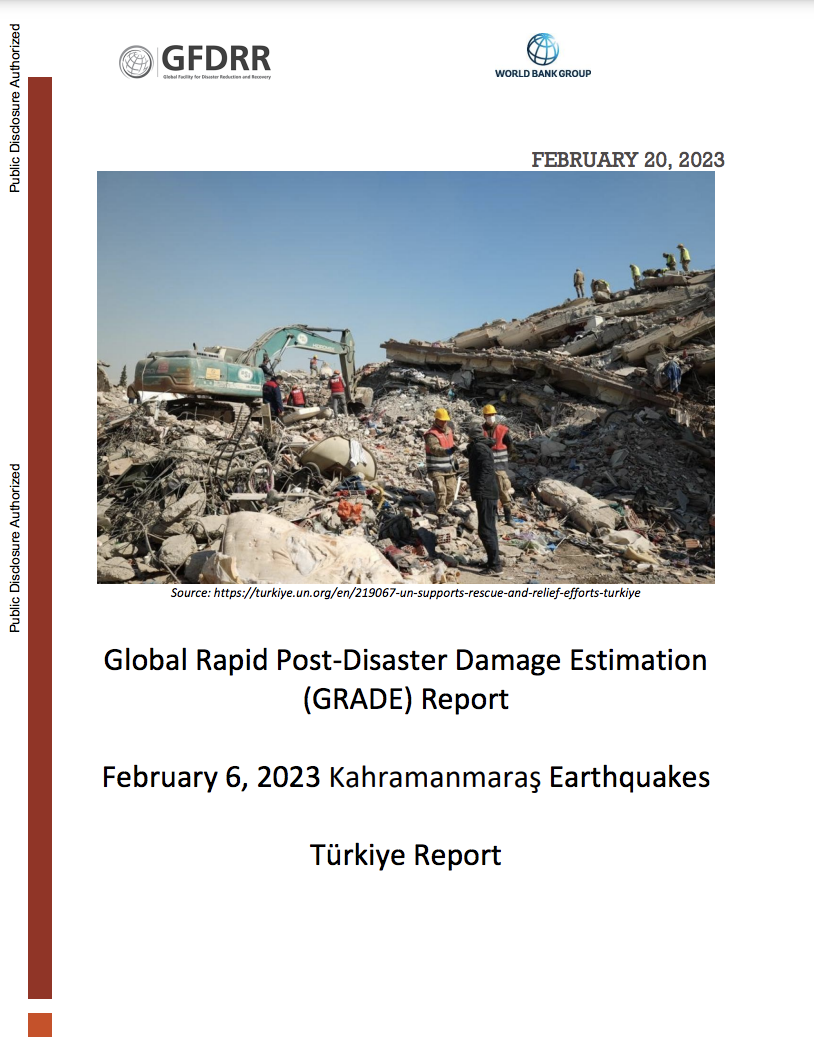On February 6, 2023, two very large earthquakes of magnitude (Mw) 7.8 and 7.5 occurred nine hours apart on different fault lines in the southern region of Türkiye and northern Syria. These are referred to as the “Kahramanmaraş earthquakes”. More than 6,212 aftershocks, including eight over magnitude 5.5 have occurred. Aftershocks are expected to continue for several months, with a decreasing frequency. These aftershocks could cause additional damage, especially in already weakened or damaged structures. A magnitude 6.3 earthquake on February 20, 2023, centered on Hatay area, is reported to have caused further damage.
In Türkiye, which is the focus of this report, these earthquakes have resulted in widespread damage across 11 provinces, where around 14.01 million (16.5 percent) of Türkiye’s population live, including Adana, Adıyaman, Diyarbakır, Elazığ, Gaziantep, Hatay, Kahramanmaraş, Kilis, Malatya, Osmaniye and Şanlıurfa. As of February 19, 2023, more than 41,020 fatalities have been reported, 108,068 people injured, and more than 1,200,000 people displaced.
The objective of this report is to provide an early and preliminary estimate of the direct damage costs caused by these earthquakes, which in turn will inform the response of the World Bank Group and its partners and support planning for recovery and reconstruction. The report is based on a rapid and remote post-disaster damage assessment that follows the established GRADE methodology.
This assessment benefited from a range of data including: government damage data and reports; simulation of earthquake ground motion through hazard modelling that was verified against instrumental strong ground motion recordings; buildings and infrastructure exposure database and capital stock information; analysis of current unit costs of construction in Türkiye; and structural vulnerability analysis. GRADE is intended as a rapid remote estimate prepared within a short timeframe to inform early decision-making, and is not intended as a substitute for detailed on-the-ground analysis which may be additionally conducted in the weeks/months to come. The GRADE assessment should be interpreted as a first-order direct damages estimation, albeit with a significant degree of reliability.

